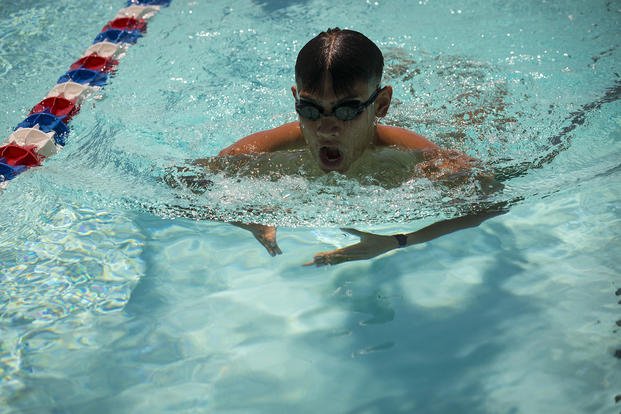When you find a training program that you want to try, you may have to make alterations to personalize it for your needs. The changes should take into consideration your current abilities, goals, the facilities you have and the time you have available per day or days per week.
You may have to make some segments of the workout harder, and some will have to be easier for you to do them safely and effectively at your current level.
Here is a note from a reader in the United Kingdom who emailed us about changing his training from a program that is similar to his job description, but also has a few alterations.
Hi, Stew! I am not becoming a rescue swimmer in the States, but I need to be able to pass a test that involves swimming and running here in the United Kingdom. How would you make adaptations to the Rescue Swimmer training programme you have to tailor it to my needs? I have 7 months to get to the required fitness standards. These are a 720-meter swim in less than 20 minutes, a 2.4-kilometer run in less than 12 minutes, and a level 9 on the beep/bleep test. Nowhere near the level of your rescue swimmer Navy A school, I know. Thanks! Marcus
Marcus,
Remember, this program is not personalized for someone who needs to swim and do daily high-repetition calisthenics to make it through rescue swimmer training. It is a generic plan that may not fit your fitness level when you start, but you can make logical changes to fit your timeline, fitness level and goals. My advice is to try the workout this way:
First of all: Good job at wanting to start now, as seven months is plenty of time to get really good at not just reaching these minimum standards but crushing these standards to the level of under a 12-minute, 720-meter swim; a 10:30 run; and a much higher level on the BEEP test in the 13+ range.
1. Intensity
If the workout is too difficult at first, cut all the repetitions and sets by 25% to 50%. Cut the runs by 25% to 50% and swim 2-3 days per week instead of 5-6 times per week to fit your abilities and daily schedule.
2. Timeline
You may want to do this 12-week program at least twice since you have seven months to prepare. You may find that the second time through, you will not have to make adjustments to make the program easier for you and may even want to add reps, time and distances to the events of the workouts.
3. Changes (Equipment/Events)
If my workout says swim with fins, you do not have to swim with fins. Just swim without them since your test and training do not require them. You will have to add the BEEP test, as there are only a few groups in the tactical professions that use that test at this time in the United States. It is a good test, though, so my advice is to add it to your leg days and running interval training workouts in the program.
4. Work on Weaknesses
The daily workouts can take time, especially when you are fitting in calisthenics, weights, running and swimming into a single training day. Pick and choose each day what you prefer from each daily column and adjust according to your abilities, facilities and goals.
5. Push Yourself Beyond the Minimums
The standards you seek are not that difficult, and you have plenty of time to get there. By practicing a swim pace of a meter per second and getting in shape to handle that, you can build up to a 12-minute swim for 720 meters, which is well below that 20-minute minimum standard.
You have time to do that, as well as build up to your seven-minute mile pace on running 2,400 meters or 1.5 miles. Just be consistent with your training days, no matter how you alter the program.
There are many programs online and in books and videos for people to add to their fitness training program. Be careful, and remember that all programs are not personalized for you unless you get personally designed programs that fit your athletic history, strengths, weaknesses, current ability, goals, time per day, days per week, facilities and equipment available. A trainer will charge you more for this service, as he or she will have to consider all of these factors in order to create the perfect program for you.
Stew Smith is a former Navy SEAL and fitness author certified as a Strength and Conditioning Specialist (CSCS) with the National Strength and Conditioning Association. Visit his Fitness eBook store if you’re looking to start a workout program to create a healthy lifestyle. Send your fitness questions to stew@stewsmith.com.
Want to Learn More About Military Life?
Whether you're thinking of joining the military, looking for fitness and basic training tips, or keeping up with military life and benefits, Military.com has you covered. Subscribe to Military.com to have military news, updates and resources delivered directly to your inbox.
















